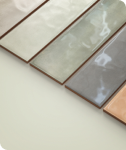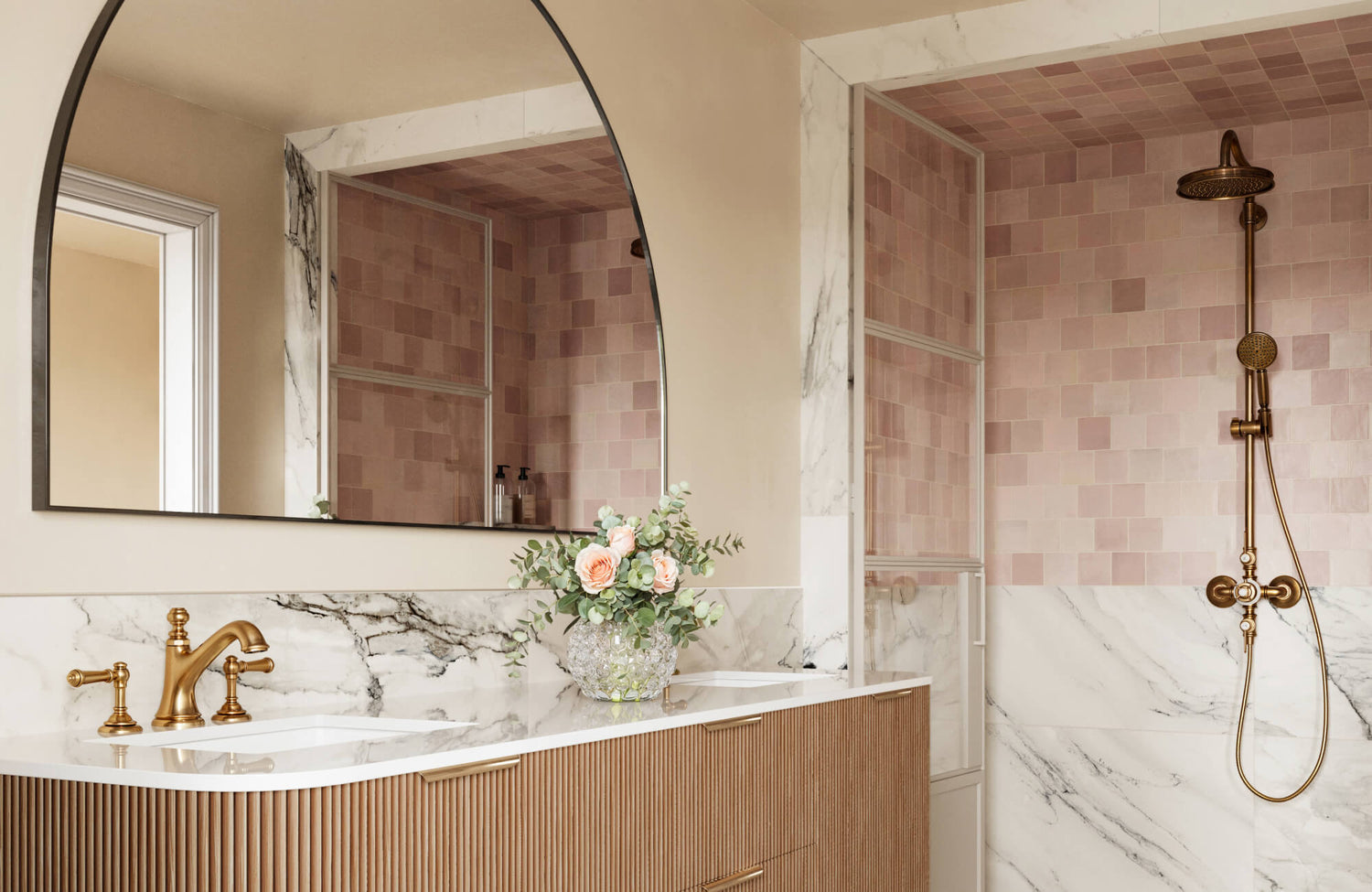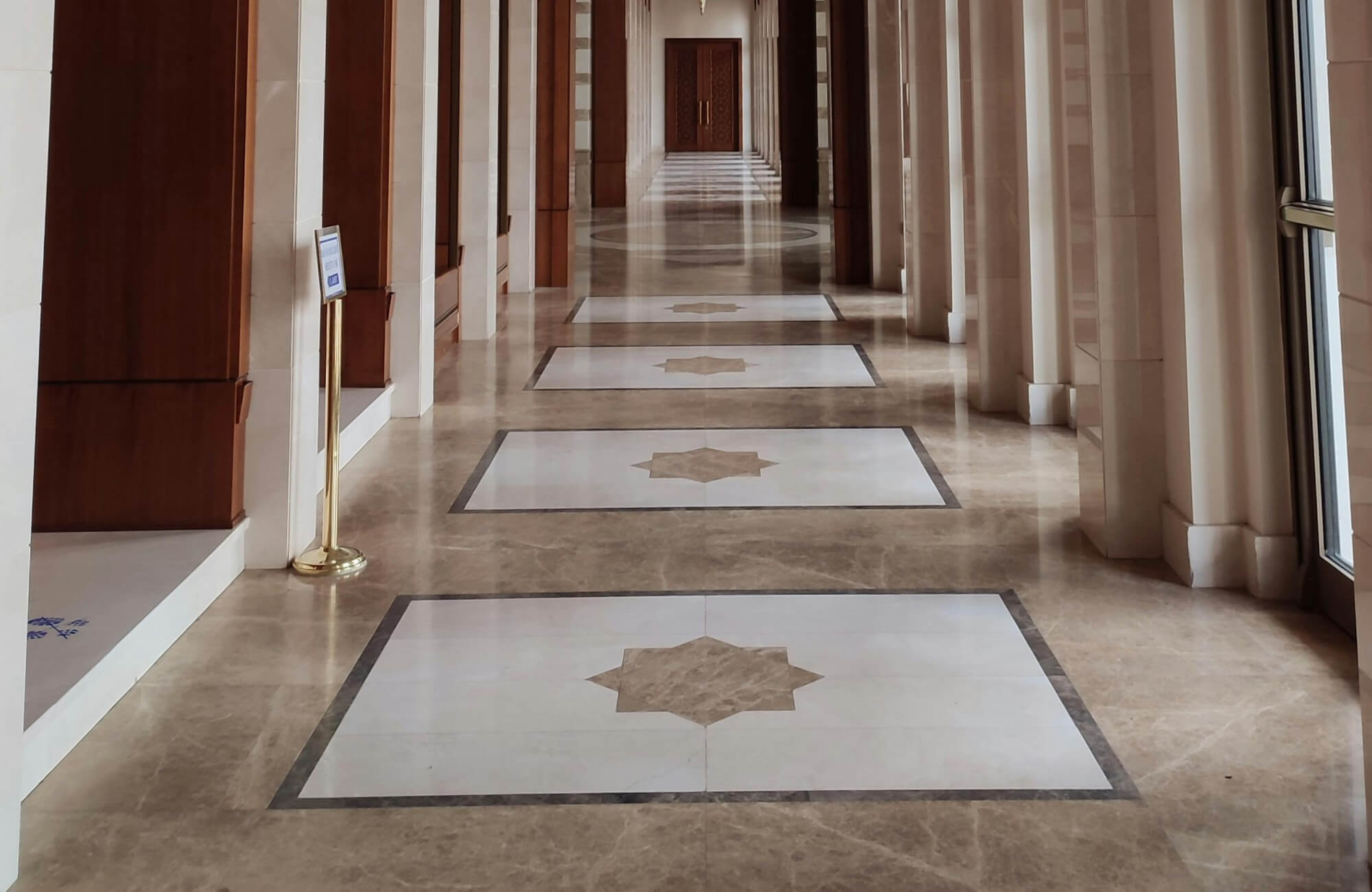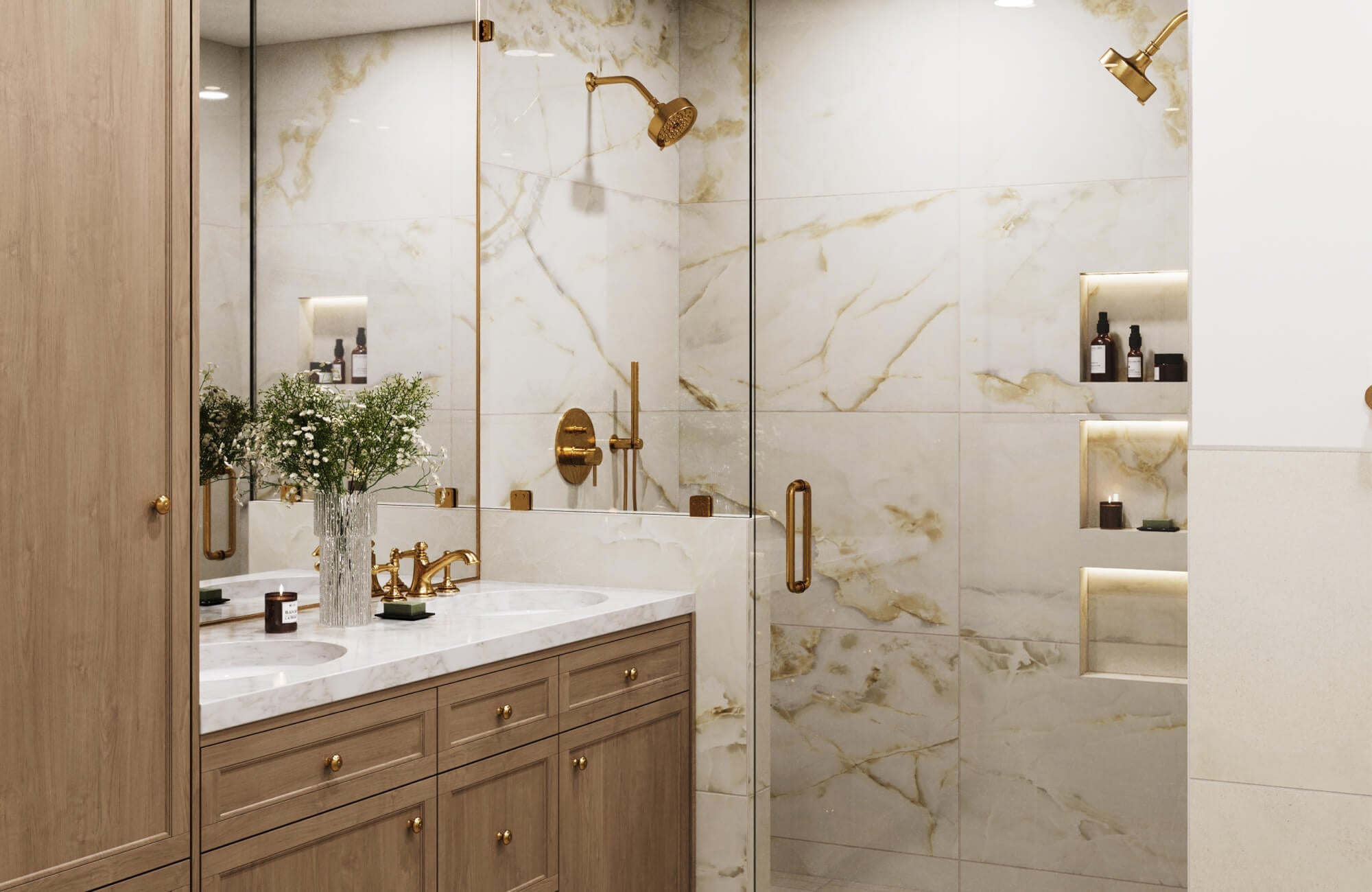A well-chosen tile combination can transform a bathroom into a stylish and functional sanctuary, elevating it from ordinary to extraordinary. The bathroom, often a space for relaxation and rejuvenation, deserves careful attention to detail, and the right blend of colors, patterns, and textures plays a crucial role in achieving this. However, with so many options available, it can be overwhelming to choose the perfect combination.
This guide will explore the key factors to consider when selecting bathroom tiles, from understanding your design style to practical considerations like water absorption and slip resistance. By following these tips, you’ll be equipped to make informed decisions and create a bathroom that enhances your daily routine while reflecting your unique taste.
Factors to Consider Before Choosing Bathroom Tiles
Before embarking on your tile selection journey, it's crucial to consider a few key factors that will significantly impact the overall look and feel of your bathroom. By carefully evaluating your space, understanding tile types and materials, and setting a budget, you can make informed decisions that align with your style and practical needs.
Bathroom Size and Layout
When evaluating the size and layout of your bathroom, consider how tile size, pattern, color, and configuration can influence the room’s spatial perception. Larger format tiles can make smaller bathrooms appear more spacious, while smaller tiles add intricate detail to larger spaces. Light, neutral-colored tiles can create an open and airy ambiance, whereas darker, bold colors lend a more intimate and cozy feel. Additionally, the way tiles are arranged can impact the overall aesthetic; vertical layouts draw the eye upward, making ceilings seem higher, while horizontal layouts can broaden the appearance of a narrow room.
Tile Types and Materials
Different types of tiles have varying levels of durability, water resistance, and aesthetic appeal.
Ceramic Tile
A popular and affordable option, ceramic tiles are durable, easy to clean, and come in a wide range of colors, patterns, and finishes. They are an excellent choice for walls and can be used in less busy areas of the floor, as they are more prone to chipping compared to other materials. This makes them ideal for spaces where durability is less critical but aesthetics are still important.
Porcelain Tile
More durable and water-resistant than ceramic tiles, porcelain tiles are ideal for busy areas like bathroom floors and wet environments. They are highly resistant to stains, scratches, and moisture while offering a versatile range of styles, from sleek and modern to rustic and traditional. Porcelain tiles can also replicate the look of natural materials like stone or wood, combining practicality with aesthetic appeal.
Natural Stone Tile
Natural stone tiles, such as marble, granite, and slate, add a touch of luxury and elegance to any bathroom. However, they require careful maintenance and can be more expensive than other tile options.
Glass Tile
Glass tiles are a popular choice for creating eye-catching backsplashes and shower walls. They are highly reflective, making them ideal for small bathrooms, as they can make the space feel larger and brighter. However, glass tiles can be more prone to scratching and cracking compared to other materials, and their slippery surface may not be suitable for floors in busy or wet areas. Additionally, they tend to be more expensive and require skilled installation to achieve a flawless finish.
Budget for Tiles and Installation
When setting a budget for tiles and installation, it’s essential to account for various factors, including material, labor, and additional costs. Tile prices can vary widely based on the material, size, and brand, with ceramic and porcelain tiles typically being more affordable than natural stone or glass options. Labor costs will also depend on the project’s complexity, the bathroom’s size, and the installer’s expertise. Additionally, expenses for grout, adhesive, and other necessary materials should be included in the budget. To save money, consider cost-effective options like DIY installation or hiring a less experienced installer. Shopping during sales or promotions can also help reduce overall expenses.

Design and Style Inspiration
Choosing the right bathroom tiles can significantly impact the overall look and feel of your space. To help you make an informed decision, let's explore some popular design trends and timeless styles.
Popular Bathroom Trends
The bathroom tile industry is constantly evolving, with new trends emerging each year. Some of the most popular trends currently include:
Subway Tiles
Subway tiles remain a classic and popular choice for bathrooms, celebrated for their versatility and timeless appeal. They can be arranged in various layouts, from traditional straight sets to contemporary herringbone patterns, allowing for a personalized design. Whether you’re aiming for a clean, minimalist aesthetic or a more eclectic style, subway tiles can adapt to your vision with options in different colors, materials, finishes, and grout choices. Their adaptability makes them a staple in both modern and traditional bathroom designs.
Geometric Patterns
Geometric tiles bring sophistication and modernity to any bathroom, adding visual interest with their dynamic shapes and designs. Patterns such as hexagons, triangles, chevrons, and simple squares or rectangles can be used to create bold statements or subtle accents, depending on the desired effect.
Matte Finishes
Matte tiles have become increasingly popular for their soft, understated elegance. Their subtle look is ideal for creating a calm and serene atmosphere in the bathroom, making them a perfect choice for those seeking a soothing and minimalist aesthetic.
Classic Styles That Stand the Test of Time
While trendy designs can be appealing, it's important to consider timeless styles that will stand the test of time. Classic options include:
Marble Tiles
Marble tiles are a timeless and luxurious choice for adding elegance to any bathroom. Renowned for their natural beauty and durability, they create a sophisticated and refined aesthetic that suits both floors and walls. Their enduring appeal also makes them a popular option for those seeking a classic and elegant design that stands the test of time.
Neutral Color Schemes
Neutral color palettes, such as white, gray, and beige, are versatile and can complement a wide range of design styles. These colors create a clean, minimalist look that is timeless, easy to maintain, and adaptable to various aesthetics. Their understated elegance makes them a popular choice for achieving a balanced and cohesive bathroom design.
Traditional Mosaics
Mosaic tiles are a timeless choice for adding artistry and elegance to any bathroom. With endless possibilities for creating intricate patterns, traditional mosaic styles like Greek key and arabesque bring a touch of history and cultural charm. Available in a wide range of colors, patterns, and materials, mosaic tiles allow for personalized and sophisticated designs that can serve as stunning focal points.
Bold and Unique Designs
Experimenting with bold and unconventional designs can transform your bathroom into a visually striking and unique space. Brightly colored tiles offer the opportunity to create a playful, vibrant atmosphere, whether through a bold accent wall or a patterned floor that adds personality and energy. Metallic finishes, such as gold, silver, or copper, also bring a touch of glamour and sophistication, working beautifully as accents or as the primary tile to create a luxurious and dramatic effect. For a truly standout feature, custom-made tile murals provide a breathtaking focal point, blending functionality with artistic expression. These bold design choices allow for endless creativity and personalization, making your bathroom a one-of-a-kind masterpiece.

Understanding the Importance of Tile Color and Pattern
Tile color and pattern play a vital role in shaping the mood and style of your bathroom, allowing you to create a cohesive and visually engaging space. Thoughtful choices, from calming hues to bold patterns or mixed materials, ensure a balance of functionality and stunning design.
Use Color Psychology for a Desired Mood
Color psychology is an essential consideration in bathroom tile design, as the colors you choose can influence the mood and atmosphere of the space. Soft, muted shades like pale blue, green, and gray create a serene, spa-like retreat, perfect for relaxation and unwinding. With its connection to nature, green particularly brings a sense of freshness and vitality. On the other hand, bright, bold colors such as red, orange, and yellow add energy and excitement, which is ideal for starting your day on an uplifting note. For a clean and classic look, white tiles remain a timeless choice, making your bathroom appear larger and brighter while providing a minimalist backdrop for other design elements. Thoughtfully selecting tile colors allows you to create a bathroom that perfectly reflects your desired mood and personal style.
Mix and Match Patterns for a Dynamic Look
Experimenting with different patterns and textures can create a visually engaging and unique bathroom. Pairing bold designs with more subdued elements or mixing tiles of various sizes and shapes can result in a striking and personalized mosaic effect. Below are some ideas for combining patterns to enhance your bathroom design:
Stripes and Checks
Combining striped and checkered tiles creates a classic and timeless look. These subtle patterns work harmoniously together, offering a refined and sophisticated aesthetic. Whether used on floors, walls, or as accents, stripes and checks provide a versatile foundation for a polished and cohesive style.
Geometric and Floral
Pairing geometric patterns with floral motifs strikes a perfect balance between structure and charm. The clean lines of geometric tiles complement the soft, organic curves of floral tiles, adding depth and elegance. For instance, a geometric floor can pair beautifully with a floral accent wall, creating a harmonious and unique bathroom design.
Solid-Colored and Patterned
A combination of solid-colored tiles as a neutral base and patterned ones as a striking focal point offers a bold yet balanced visual effect. For instance, pairing a solid beige tile like the Brody 24x24 Matte Porcelain Tile in Sand with intricate geometric patterned tiles such as the Sarina 3x12 Glossy Ceramic Fishscale Tile in Cloud on bathroom walls creates a dynamic contrast that is both creative and cohesive, as shown in the photo above. This combination brings subtle texture and elegance, perfect for accent walls, backsplashes, or shower niches, adding depth and balance to your design.
Create Cohesion With a Consistent Theme
Achieving a cohesive and stylish bathroom design starts with selecting tiles that align with your overall theme. For a coastal theme, consider blue and white tiles with beach-inspired patterns or natural tones like blues, greens, and whites. You can also incorporate nautical motifs such as stripes or anchors to enhance the seaside vibe. A modern theme, on one hand, calls for sleek, minimalist tiles in neutral shades like white, gray, or black, paired with clean lines and geometric patterns to achieve a contemporary, uncluttered look. If you prefer a vintage theme, opt for tiles with intricate patterns and muted colors, such as floral or damask designs, and complement them with antique-style fixtures to evoke a sense of nostalgia.
Mixed Materials
Mixing different materials can add visual interest and create a unique and eclectic bathroom style. For instance, you could combine ceramic wall tiles with porcelain floor tiles and natural stone accents. You could also mix different finishes, such as matte and glossy, to create a dynamic contrast.
When mixing materials, it's important to choose colors and patterns that complement each other. For instance, you could pair a textured stone tile with a smooth, glossy ceramic tile in a complementary color.

Functional Considerations
While aesthetics are undoubtedly important, it's equally crucial to prioritize functionality when selecting bathroom tiles to ensure safety, durability, and ease of maintenance.
Account for Moisture and Humidity
Bathrooms experience high levels of moisture and humidity, making it crucial to select tiles that can withstand these conditions. Water-resistant options like porcelain and ceramic tiles are ideal for shower walls and bathroom floors, as their dense, non-porous surfaces resist water damage. For natural stone tiles, which are more porous, sealing is essential to protect against water infiltration and staining. Proper ventilation is equally important for managing moisture levels and preventing mold and mildew growth. Installing a high-quality exhaust fan helps remove excess humidity, ensuring a healthier and longer-lasting bathroom environment.
Focus on Slip Resistance and Safety
Bathrooms are inherently wet environments, so prioritizing slip-resistant tiles is essential for safety. Textured tiles or those with matte finishes provide better grip and traction, making them ideal for wet areas like shower floors and bathtub surrounds. Many tiles come with a high coefficient of friction (COF) rating, ensuring they are designed to minimize slipping hazards. Additionally, some manufacturers offer anti-slip treatments that can be applied to tiles to enhance their safety features. For households with elderly individuals or young children, choosing non-slip finishes or incorporating textured surfaces is particularly important. Complementing these choices with non-slip mats or rugs in key areas further reduces the risk of accidents, ensuring a safe and secure bathroom environment.
Choose Tiles That Are Easy to Clean
For a bathroom that is both practical and low-maintenance, opt for tiles that are easy to clean and resistant to stains. Glazed ceramic tiles feature a smooth, non-porous surface that resists mildew and simplifies upkeep, while porcelain tiles offer similar durability and stain resistance. Both options are ideal for busy households, as they require minimal effort to maintain. Regular cleaning with mild detergent and warm water is typically sufficient to prevent the buildup of dirt, grime, and soap scum, ensuring a fresh and hygienic bathroom. Using abrasive cleaners should also be avoided to prolong the tiles' lifespan.
Combining Tiles for Different Bathroom Zones
Creating seamless transitions in your bathroom requires thoughtful coordination of colors, patterns, and materials to ensure a harmonious and visually appealing design. Begin by selecting a cohesive color palette, whether complementary, analogous, or monochromatic, to establish consistency throughout the space. For example, a light-colored porcelain tile on the floor paired with a darker shade of the same tile on the walls can create a sense of continuity and add visual depth. Mixing patterns can further enhance the design; a geometric patterned floor tile works beautifully with solid-colored or subtly striped wall tiles, creating a dynamic and balanced aesthetic.
Material consistency is another key element for unifying the bathroom’s design. Using the same material for both the floors and walls fosters a cohesive look, while varying finishes, such as matte and glossy, add texture and interest without disrupting the overall harmony. By thoughtfully blending colors, patterns, and materials, you can create a bathroom that is not only visually engaging but also unified and stylish.

Common Mistakes to Avoid When Choosing Tiles
While it's essential to select tiles that complement your personal style, it's also important to consider practical factors that can significantly impact your bathroom's functionality and longevity.
Avoid Overlooking Practicality for Aesthetics
Glossy tiles, although visually stunning, can become slippery when wet, especially on floors. Opting for matte or textured tiles improves traction and significantly reduces the risk of accidents. Similarly, natural stone tiles like marble and limestone are undeniably elegant but are porous and prone to staining. Regular sealing is necessary to protect these materials from water damage and discoloration.
Neglecting Grout Color and Maintenance
Grout is a crucial yet often overlooked aspect of tile installation that significantly impacts both the appearance and longevity of your tiled surfaces. The color of grout can enhance your bathroom’s overall aesthetic, with complementary tones creating a cohesive look. For instance, darker grout can add stylish contrast but may make cleaning more challenging, while lighter grout provides a seamless finish but is more prone to staining in busy areas. The width of grout lines also plays a role in the design; wider lines create a rustic or vintage feel, whereas narrower lines lend a sleek, modern appearance.
However, since grout is susceptible to mold, mildew, and discoloration, especially in wet environments like bathrooms, proper maintenance is crucial. Regular cleaning with a grout brush and specialized solution can prevent buildup, while sealing the grout protects it from water damage and stains, preserving its fresh appearance over time. By carefully selecting grout color, line width, and maintaining it diligently, you can enhance the beauty and functionality of your bathroom tiles.
Failing to Test Tile Samples in Real Lighting
Lighting plays a crucial role in how tiles appear, as their color, texture, and finish can look dramatically different under various lighting conditions. Natural light often highlights subtle color variations and textures that artificial lighting might not reveal. Conversely, in low-light areas such as shower stalls or under cabinets, tiles with certain finishes, particularly high-gloss ones, may distort reflections and create unpleasant visual effects.
To avoid surprises, always test tile samples in the specific lighting conditions of your bathroom. Take samples home and place them in different areas to observe how they interact with both natural and artificial light. This process ensures the tiles complement your existing decor and meet your expectations for color, texture, and overall aesthetic.

How to Visualize Your Bathroom Tile Design
In today's digital age, a plethora of online tools and apps can help you experiment with different tile designs and color palettes. These tools often allow you to upload a photo of your bathroom and virtually "tile" it with various options. You can play around with different tile sizes, shapes, colors, and patterns to see how they would look in your space. Some popular options include:
Tile Visualization Apps
These apps allow you to upload a photo of your bathroom and experiment with different tile designs. You can choose from a variety of tile patterns, colors, and sizes to create a personalized look. For an even more immersive experience, Edward Martin's Augmented Reality (AR) tool lets you visualize their tile selections directly in your bathroom, ensuring your design choice feels just right.
Interior Design Software
Many interior design software programs offer tile visualization tools that allow you to create detailed 3D renderings of your bathroom. This can help you to see how different tile combinations will look in your space.
Designing Your Perfect Bathroom Tile Combination
Selecting the perfect bathroom tiles is a thoughtful process that balances design, functionality, and budget. From assessing your bathroom’s size and layout to exploring materials, colors, and patterns, every choice contributes to creating a cohesive and stylish space. Timeless options like subway tiles, bold mosaics, or textured finishes offer endless opportunities for personalization. Practical considerations, such as slip resistance, ease of maintenance, and durability, ensure your bathroom remains both beautiful and functional over time.
Additionally, attention to finer details, such as grout color, lighting conditions, and seamless transitions, can further elevate your design. Testing tile samples in natural and artificial light and visualizing layouts using online tools can also help you make confident decisions. By combining creativity with practicality, the right tile combination transforms your bathroom into a personal sanctuary that reflects your style while meeting your everyday needs. Thoughtful planning will leave you with a space that is both timeless and uniquely yours.









